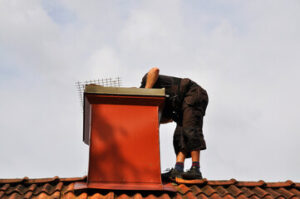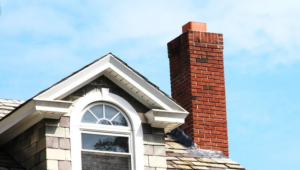Pest monitoring is a critical step in effective Knoxville Pest Control. It involves identifying the circumstances or conditions that favor a pest infestation and determining the economic threshold for the pest.
For example, saucer magnolia is most vulnerable to insect infestation when the tree reaches pink bud to early bloom stage. So, the optimum time to apply a biorational product is when the trees are at this stage.
Prevention

Pest infestations present a risk to the safety and quality of food products produced at a facility, which can lead to product recalls and damage to company reputation. While implementing preventive measures takes more time and effort, it eliminates the need to use costly reactionary pest control techniques and reduces a facility’s exposure to pests and their contaminants.
Prevention consists of limiting pests’ ability to access a facility and prevent them from entering the building. This includes caulking cracks and crevices, covering holes in the ground or foundation with steel wool, and sealing expansion joints where pipes enter the building. It also includes keeping trash cans and dumpsters away from entrances and cleaning them regularly to limit odors that attract pests. It is important to monitor and identify a pest’s habitat so that preventive actions can be taken, such as removing weeds or blocking access to water sources that may attract the pests.
Observing and monitoring a pest’s presence and damage helps determine the right time to take action. Monitoring is done using a variety of methods, including visual inspection and scouting (searching for, identifying, and assessing pests), trapping, and passive monitoring methods such as tracking environmental conditions like temperature and moisture that are conducive to pest growth.
Assessing a pest problem involves determining whether it is at a level that requires corrective action, or “action threshold”. This is the basic principle that separates IPM from other pest management strategies and is accomplished by using monitoring data to answer three key questions:
Is the pest causing damage? Is the damage expected to continue? Is the damage to a product or site acceptable?
A pest is any organism that interferes with desirable plants in fields and orchards, landscapes, and wildlands, damages buildings, or disturbs the environment. It can be a plant (weed), vertebrate (bird, rodent, or other mammal), invertebrate (insect or mite), pathogen (bacteria, virus, or fungus that causes disease), or other unwanted organism. A pest control operator will only apply a treatment when it is necessary, and when the risks of applying pesticides outweigh the benefits.
Suppression
Pests are unwanted organisms that damage crops, food stores, gardens, livestock, wildlife habitats and homes, displace native plant species or disrupt terrestrial and aquatic ecosystems. They may also displace beneficial organisms and cause human illness or injury. There are many types of pests including insects, nematodes, fungi, weeds, viruses and vertebrate animals such as rodents, birds, butterflies and beetles. Some pests are continuous — they are always present and require frequent control, while others are sporadic or migratory — they need to be controlled less frequently but still need to be monitored.
Monitoring helps prevent pests by providing information on population size, distribution and damage that allows managers to make informed decisions about control measures to take. Monitoring methods vary depending on the type of pest and its environment. For example, monitoring methods for insect pests include scouting (regularly searching for and identifying pests) and trapping – such as pitfall or sticky traps in fields and orchards/vineyards or multi-funnel traps in forests. Monitoring can also involve checking the presence of natural enemies of the pest, the maturity of the crop and environmental conditions such as temperature and moisture.
In integrated pest management (IPM) programs, monitoring data is used to determine if the pest population has reached or exceeded an action threshold. This threshold is set at the local level for a particular crop and pest and can be based on historical populations, current damage levels or forecasted population growth. Using action thresholds to guide control decisions eliminates the possibility that pesticides will be used when they are not needed, or that the wrong type of pesticide will be used.
In addition, monitoring can help develop and implement prediction phenological models that allow managers to predict when a pest will reach or pass a threshold. This provides more time to deploy effective control strategies, and can prevent the need for unnecessary or excessive use of chemicals. This is especially important in situations where a pest is considered to be of such concern that there is zero tolerance, as in operating rooms and other sterile areas of health care facilities.
Detection
The first step in pest control is detecting them. This is the most important step because it allows you to act before they cause significant damage. Detection can be accomplished by using various sensors, including infrared and audio, or by visual observation. The more sophisticated systems are capable of determining the type of pest and its location. Some are even capable of identifying a specific insect and its behavior. Using these systems can help homeowners determine whether the pest population has reached a level that they can tolerate.
Many modern technologies can be used for detection, including radar technology for monitoring pest migration, video equipment to observe flying insects, thermal infrared imaging and chemiluminescent tags to monitor insect movement at night, global navigation satellite system based telemetry for tracking, and habitat mapping. However, these are usually expensive and require specialized skills to operate. In addition, they often do not provide continuous surveillance, which is essential for preventative pest monitoring.
Pest detection can be difficult, particularly in the case of plant diseases and pests. In these cases, the symptoms of the disease or pest are not as obvious as with other types of damage. This makes it difficult to identify them by manual inspection or computer interpretation. In addition, the quality of images varies greatly depending on the weather conditions. The sun’s light is the best for collecting plant diseases and pests images, but cloudy weather will reduce the accuracy of these images.
Currently, most of the plant diseases and pests detection methods are based on visible light or a combination of several electromagnetic waves. A more comprehensive method that can collect information in different wavelengths is needed to achieve a better detection performance. In the future, research should focus on multi-information fusion methods to achieve the acquisition of a more complete set of plant diseases and pests data. In particular, attention mechanisms should be employed to select the relevant information and allocate resources more effectively. This will help to improve the detection performance of the model and improve the results of its application.
Control
Detecting, identifying and assessing pests is the first step in the process of controlling them. This involves regularly searching or scouting for pests in crop fields and orchards, landscapes, wildlands or gardens; looking for the damage they cause; and making decisions about when to start control efforts. Pests may be insects, insect-like organisms, weeds, vertebrates (birds, rodents, or other mammals), mycoplasmas, nematodes, or pathogens (bacteria, virus, or fungus that causes disease in plants).
Pest monitoring can include visual inspection, sticky traps, and sweep nets. It can also include observing the environment for clues as to when pest numbers will reach or exceed action threshold levels. Environmental conditions such as soil temperatures, moisture, and air humidity are important factors in predicting when pest populations will reach action thresholds.
Once action thresholds have been reached, the decision to control must be based on an assessment of the level of damage caused by the pests and the effectiveness of prevention or avoidance tactics. It also must take into account the potential risks of using particular types of control methods, including their impacts on human health and the environment.
Monitoring results, including information about the population and damage history of the pest, help you select the best biological, physical, or chemical control method to reduce the pest to an acceptable level. This is a key concept in the practice of integrated pest management (IPM).
Many pest problems develop quickly and may require action immediately. Some pests are constant or recurring; others are sporadic, migratory, or cyclical and may not need control under normal conditions. Continuous monitoring allows you to track their movement and make decisions about when to begin or end control efforts. Monitoring at multiple locations can allow you to compare the speed and direction of pest movements, which can be useful in developing a control strategy that minimizes harm and has the least impact on people or other organisms. This is especially true for invasive species, which can spread rapidly and may be hard to eradicate once they become established in an area. This is why it is important to monitor at the right time and place.








